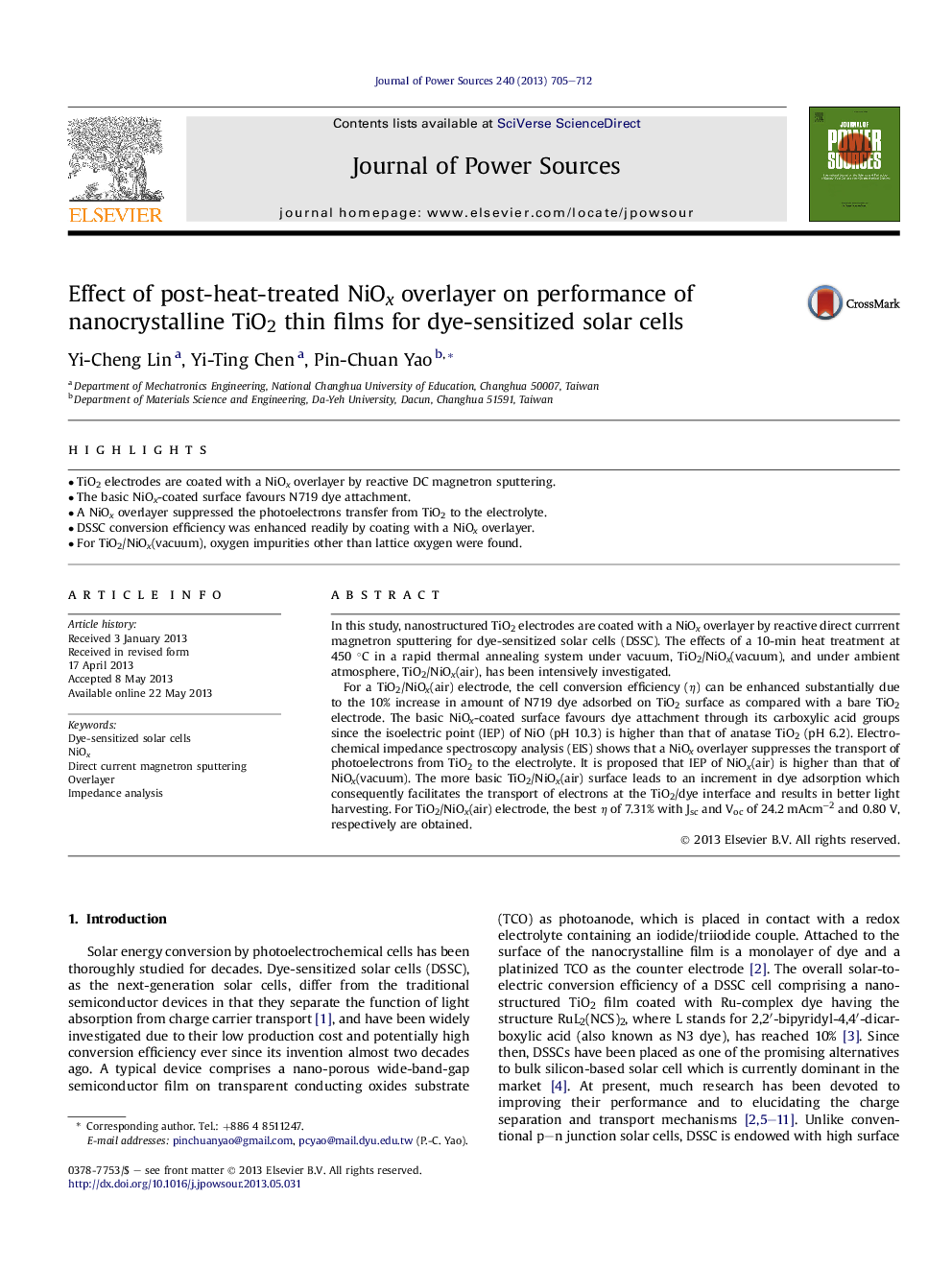| Article ID | Journal | Published Year | Pages | File Type |
|---|---|---|---|---|
| 7740798 | Journal of Power Sources | 2013 | 8 Pages |
Abstract
For a TiO2/NiOx(air) electrode, the cell conversion efficiency (η) can be enhanced substantially due to the 10% increase in amount of N719 dye adsorbed on TiO2 surface as compared with a bare TiO2 electrode. The basic NiOx-coated surface favours dye attachment through its carboxylic acid groups since the isoelectric point (IEP) of NiO (pH 10.3) is higher than that of anatase TiO2 (pH 6.2). Electrochemical impedance spectroscopy analysis (EIS) shows that a NiOx overlayer suppresses the transport of photoelectrons from TiO2 to the electrolyte. It is proposed that IEP of NiOx(air) is higher than that of NiOx(vacuum). The more basic TiO2/NiOx(air) surface leads to an increment in dye adsorption which consequently facilitates the transport of electrons at the TiO2/dye interface and results in better light harvesting. For TiO2/NiOx(air) electrode, the best η of 7.31% with Jsc and Voc of 24.2 mAcmâ2 and 0.80 V, respectively are obtained.
Keywords
Related Topics
Physical Sciences and Engineering
Chemistry
Electrochemistry
Authors
Yi-Cheng Lin, Yi-Ting Chen, Pin-Chuan Yao,
